目次
- 1 Nintendo’s Switch 2 Amazon Exit: Anti-Scalping Strategy
- 1.1 Withdrawal from Amazon US – The Timeline and Truth Behind the Conflict
- 1.2 The “Dark Side” of Amazon Marketplace and Structural Issues
- 1.3 Nintendo Switch 2’s Comprehensive Anti-Scalping Measures – The Complete “Defense System”
- 1.3.1 1. Strict Account Authentication
- 1.3.2 2. Dual Pricing and Regional Restrictions
- 1.3.3 3. SD Card Control Strategy
- 1.3.4 4. Payment Method Restrictions
- 1.3.5 5. Warranty Card Elimination and Receipt-Based System
- 1.3.6 6. Supply Volume and Production System
- 1.3.7 7. Cooperation with Marketplace and Auction Sites
- 1.3.8 8. Retailer Cooperation and Unique Measures
- 1.4 Nintendo Switch 2’s Technical Evolution and Market Strategy
- 1.5 Anti-Scalping Measure Effects and Remaining Challenges
- 1.6 Safe Switch 2 Purchase Guidelines for Consumers
- 1.7 Industry Impact of Nintendo’s Strategy
- 1.8 Related Articles
- 1.9 References
Nintendo’s Switch 2 Amazon Exit: Anti-Scalping Strategy
July 1, 2025
Nintendo Switch 2, launched on June 5, 2025, sold over 3.5 million units worldwide in just four days, setting Nintendo’s fastest sales record. However, behind this spectacular debut, a conflict over sales rights between Nintendo and Amazon has sent shockwaves through the gaming industry.
Why did Nintendo make the unprecedented decision to withdraw its products from Amazon’s US site, the world’s largest e-commerce platform? And what is Nintendo’s “comprehensive defense system” anti-scalping strategy behind this decision? This article provides a detailed analysis based on the latest research findings.
Withdrawal from Amazon US – The Timeline and Truth Behind the Conflict
Nintendo’s withdrawal from Amazon’s US site was triggered by price destruction caused by third-party sellers. According to sources familiar with the matter, these sellers were purchasing Nintendo products in bulk in Southeast Asia, exporting them to the US, and selling them below Nintendo’s retail prices.
In response, Amazon proposed labeling to guarantee product authenticity and enable tracking. However, Nintendo deemed this proposal insufficient and ultimately decided to discontinue sales on Amazon’s US site.
Detailed Timeline of the Conflict
Since 2024, gaming media reported that Nintendo product pages began disappearing from Amazon’s US site. Previously marked as “Ships from and sold by Amazon.com,” indicating products sourced directly from Nintendo, the remaining products were from third-party sellers on Amazon’s marketplace.
Nintendo’s spokesperson stated, “There is no such fact, and we do not disclose negotiations or contract details with retailers,” while Amazon’s spokesperson said, “Bloomberg’s claims about our relationship with Nintendo are inaccurate,” though avoiding detailed explanations.
Interestingly, Amazon continues to sell Nintendo products in other countries including Canada, Japan, and the UK. However, US consumers face an unprecedented situation where they cannot purchase Switch 2 from their most familiar e-commerce site, with social media filled with demands for Amazon availability.
The “Dark Side” of Amazon Marketplace and Structural Issues
Behind this issue lie structural challenges within Amazon’s marketplace. Amazon employs a hybrid model of direct sales and marketplace, but this growth strategy has revealed several problems:
Issues with Malicious Sellers
- Increased counterfeit listings
- Proliferation of “sakura reviews” (fake reviews)
- Fraudulent practices offering refunds in exchange for positive reviews
- Product code misrepresentation issues
In Japan, antitrust law prevents Amazon from requiring marketplace sellers to maintain “price parity.” As a result, products available cheaply on AliExpress are sometimes listed on Amazon’s marketplace at multiple times the price.
Amazon has not achieved 100% elimination of counterfeits, illegal products, and defective items, and its AI-based automatic suspension system sometimes mistakenly freezes legitimate sellers, causing frustration in the seller community.
Nintendo Switch 2’s Comprehensive Anti-Scalping Measures – The Complete “Defense System”
Nintendo’s Amazon withdrawal can be seen as part of its comprehensive anti-scalping strategy. For Switch 2’s launch, Nintendo declared it would “take every possible measure,” implementing unprecedented anti-scalping measures based on past experiences with console shortages and price inflation due to scalping.
1. Strict Account Authentication
For lottery sales on My Nintendo Store, the following strict conditions are set:
- As of February 28, 2025, cumulative Nintendo Switch software playtime of 50+ hours (excluding demos and free software)
- Nintendo Switch Online subscription for 1+ years cumulatively, with active subscription at application time
- Japanese residency with a Nintendo account set to Japan
These conditions suppress multiple applications for scalping purposes and prioritize genuine gaming enthusiasts. The first lottery sale received approximately 2.2 million applications from Japan alone, far exceeding Nintendo’s predictions.
2. Dual Pricing and Regional Restrictions
Switch 2 adopts a groundbreaking pricing strategy approach:
- “Japanese Domestic Model”: MSRP ¥49,980 (tax included)
- “Multi-language Model”: MSRP ¥69,980 (tax included)
This ¥20,000 price difference and regional lock (domestic models unusable overseas) aims to prevent overseas scalpers from bulk purchasing in Japan for high-price resale. The Japanese domestic model is available at game retailers nationwide including Amazon, while the multi-language model is exclusive to My Nintendo Store.
3. SD Card Control Strategy
Switch 2 only supports “microSD Express cards” instead of conventional microSD cards. Nintendo officially sells these proprietary 256GB microSD Express cards at ¥6,980, significantly below market price (¥25,000+), with limited Mario designs available.
Legacy Switch microSD cards are incompatible with Switch 2, and this compatibility break restricts storage distribution, serving as a key anti-scalping measure. By creating a situation where attractive official SD cards are difficult to obtain even if scalpers secure consoles, this strategy reduces scalping profits.
4. Payment Method Restrictions
Since January 2025, My Nintendo Store implements the following payment restrictions:
- Foreign-issued credit cards suspended
- Foreign PayPal accounts suspended
This physically prevents overseas scalpers from bulk purchasing Japanese products, making products more accessible to domestic consumers.
5. Warranty Card Elimination and Receipt-Based System
Switch 2 includes no physical warranty card, requiring proof of purchase (receipts, invoices, etc.) for warranty service. Receipts contain personal information, and scalpers tend to avoid providing them to prevent identity exposure risks.
When purchasing scalped products, warranty claims may be rejected due to name mismatches, resulting in paid repair risks. This reduces scalped product value and deters scalping.
6. Supply Volume and Production System
Nintendo plans to ship 20 million units in 2025, significantly strengthening supply capacity versus demand. To counter US tariffs and prevent shortages, they pre-stocked “hundreds of thousands of units” months before launch.
Production facilities are diversified beyond China to include Vietnam and Cambodia in Southeast Asia. By ensuring sufficient supply, they aim to eliminate shortages and reduce scalpers’ profit opportunities.
7. Cooperation with Marketplace and Auction Sites
On May 27, 2025, Nintendo agreed to cooperate with three major Japanese marketplace operators:
- LINE Yahoo (Yahoo! Auctions, Yahoo! Flea Market): Complete ban on Switch 2 console listings. Violations result in listing removal and account suspension
- Mercari: Auction-format listings banned. High-value sellers required to verify identity, with enhanced AI monitoring and manual patrols
- Rakuma: Stricter enforcement against listings without possession and immediate freezing of violating accounts
This cooperation aims to eliminate “gray zones” like pre-order sales and illegally obtained products, protecting official sales channels.
8. Retailer Cooperation and Unique Measures
Retailers implement their own anti-scalping measures:
- Joshin: Lottery participation limited to members with specific purchase history
- Amazon: Invitation-based reservation system evaluating account history, gaming product purchases, return/cancellation history, and shipping address validity. Strict one-per-account limit with 48-hour purchase window
- Nojima: Previously required customers to write names on consoles at purchase
- GEO: Introduced unique measures like rock-paper-scissors tournaments
Nintendo Switch 2’s Technical Evolution and Market Strategy
Switch 2 represents significant technical evolution from its predecessor. These advances, combined with anti-scalping measures, establish market superiority.
Key Technical Specifications
- Processor: NVIDIA custom T239 chip (3.09 TFLOPS docked, 1.72 TFLOPS portable)
- Memory: 12GB LPDDR5 (significant increase from original’s 4GB)
- Storage: 256GB UFS 3.1 built-in (8x increase from original’s 32GB)
- Display: 7.9-inch wide color gamut LCD, Full HD (1920×1080) resolution
- Video Output: Up to 4K (3840×2160) 60Hz, HDR10 support
- Battery: 5,220mAh, approximately 2-6.5 hours runtime
Joy-Con 2’s Innovative Features
The new Joy-Con switches from slide to magnetic attachment and includes:
- HD Rumble 2 and C button (for game chat access)
- Mouse functionality
- Enlarged SL and SR buttons
- Improved grip design
Backward Compatibility and Data Transfer
Switch 2 offers backward compatibility with most original Nintendo Switch games. Using a hybrid software/hardware emulation approach, existing games can utilize Switch 2’s new features like game chat.
The “complete transfer” feature enables migration of user information, save data, settings, and screenshots. The “Virtual Game Card” feature allows transfer of downloaded games to other Switch/Switch 2 consoles or lending to family members for up to two weeks.
Anti-Scalping Measure Effects and Remaining Challenges
These measures have suppressed the Switch 2 scalping market, with high-price scalping less prevalent than previous launches. Increased supply and strict anti-scalping measures have reduced scalping prices by approximately 30% from initial peaks, with near-MSRP transactions becoming central.
Social media campaigns with hashtags like “#StopScalping” and “#BuyAtMSRP” show consumer solidarity. However, complete scalping prevention remains challenging with several issues:
Emergence of New Scalping Routes
With major marketplace bans, scalper activity may shift to less regulated spaces like social media person-to-person transactions, online garage sales, and cryptocurrency-based trades.
Peripheral Impact
Beyond consoles, popular accessories and additional controllers become scalping targets, experiencing shortages and high-price resales.
Overseas Market High-Price Scalping
Sites like eBay continue high-price scalping through routes outside Japanese countermeasures.
Legal Regulation Limits
In Japan, game console scalping itself isn’t illegal in principle (though may violate secondhand dealer laws). While some countries progress with legal measures like bot-use bans for bulk purchases, Japan remains largely “private sector-dependent.”
Safe Switch 2 Purchase Guidelines for Consumers
Users should prioritize official channels to avoid scalper fraud and overcharging risks.
Trusted Retailers
- My Nintendo Store
- Amazon (when sold by Amazon.co.jp)
- Rakuten Books
- Major electronics retailers (Yodobashi Camera, Bic Camera, Yamada Denki, etc.)
Fraud Warning Signs
- “Congratulations, you won!” scam messages
- Suspiciously low-priced fake sites
- Sites accepting only bank transfers
Purchase Proof Storage
Since Switch 2 lacks warranty cards, carefully preserve purchase receipts, invoices, and online order confirmations. Create digital backups in multiple locations and make paper copies.
Industry Impact of Nintendo’s Strategy
Nintendo’s US Amazon withdrawal and comprehensive anti-scalping measures highlight fundamental challenges beyond mere sales rights issues: price control difficulties in globalized distribution systems and brand value protection.
Nintendo’s “choosing your customers” approach may significantly influence future consumer goods manufacturers’ sales strategies. For other industries struggling with scalping, Nintendo’s “comprehensive defense system” serves as a valuable case study.
Switch 2 is projected to ship 8 million units domestically in its first year, with approximately ¥3 trillion in domestic market ripple effects, and over 20 million units expected globally. GDC surveys show many game developers creating or interested in Switch 2 titles, with major third parties like Square Enix, Capcom, and CD Projekt Red announcing participation.
Nintendo has constructed a “comprehensive defense system” against scalping involving consoles, accounts, SD cards, payment methods, distribution channels, and partner cooperation across the entire supply chain. This aims to create an environment where genuine gamers can fairly obtain Switch 2.
Related Articles
For more information about Nintendo Switch 2’s scalping issues, see these articles:
References
- Wikipedia – Nintendo Switch 2
- Eco Ring – Switch2 Anti-Scalping Measures
- Eco Ring – Switch2 Anti-Scalping Cooperation
- Forte Tsukuba – Switch2 Scalping and Repairs
- Nintendo Official Store
- Business Insider Japan
- Ameblo – Nintendo Switch 2 Details





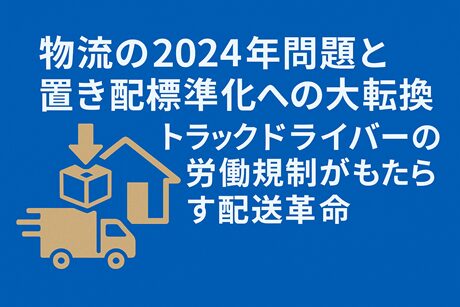



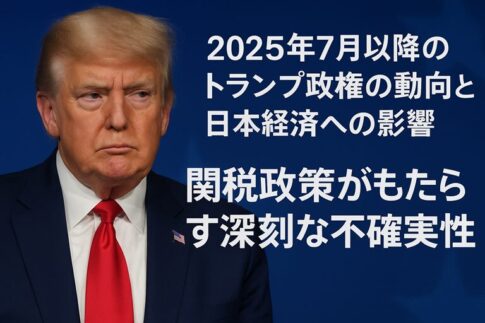
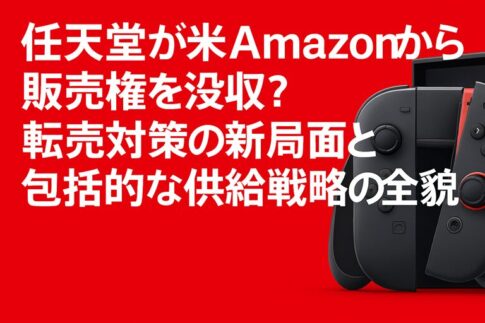
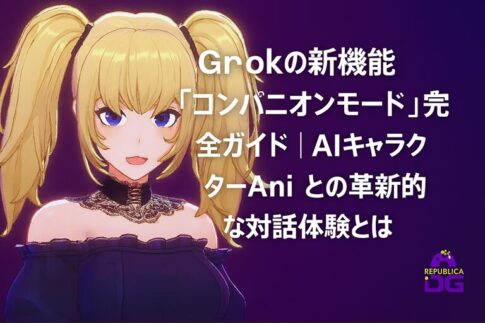
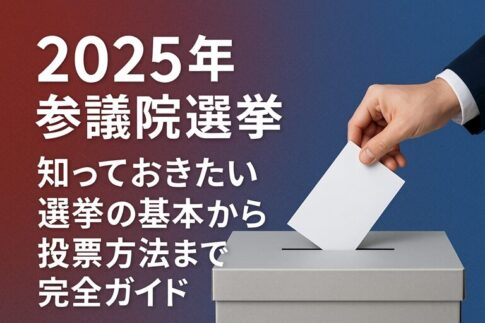




Leave a Reply